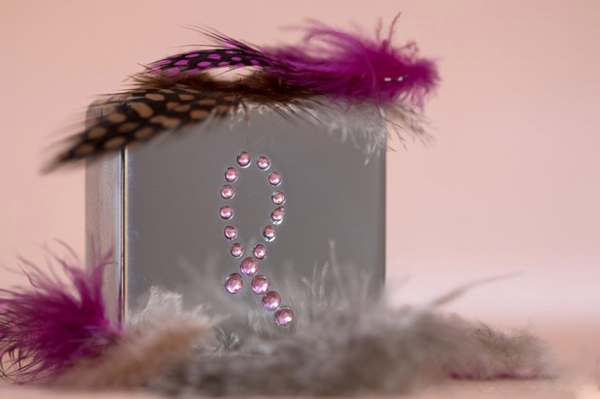
October: Breast Cancer Awareness
Cancer is a broad term for a class of diseases characterized by abnormal cells that grow and invade healthy cells in the body. Breast cancer starts when cells in the breast begin to grow out of control. These cells usually form a tumor that can often be seen on an x-ray or felt as a lump. The tumor is malignant (cancerous) if the cells can grow into (invade) surrounding tissues or spread (metastasize) to distant areas of the body. Breast cancer occurs almost entirely in women, but men can get it, too.
Stats about breast cancer: Breast cancer is the most common cancer in women both in the developed and less developed world.
- Belgium had the highest rate of breast cancer, followed by Denmark and France.
- Slightly more cases of breast cancer were diagnosed in less developed countries (53%).
- The highest incidence of breast cancer was in Northern America and Oceania; and the lowest incidence in Asia and Africa.
What are the risk factors for breast cancer?
Most women who have one or more breast cancer risk factors never develop breast cancer, while many women with breast cancer have no known risk factors (other than being a woman and growing older). Even when a woman with risk factors develops breast cancer, it’s hard to know just how much these factors might have contributed.
Breast cancer risk factors you cannot change : Having a risk factor, or even many, does not mean that you are sure to get the disease.
- Being a woman: Simply being a woman is the main risk factor for breast cancer. Men can have breast cancer, too, but this disease is about 100 times more common in women than in men. This might be because men have less of the female hormones estrogen and progesterone, which can promote breast cancer cell growth.
- Getting older: As you get older, your risk of breast cancer goes up. Most invasive breast cancers (those that have spread from where they started) are found in women age 55 and older.
- Certain inherited genes: About 5% to 10% of breast cancer cases are thought to be hereditary, meaning that they result directly from gene defects (called mutations) passed on from a parent.
- BRCA1 and BRCA2: The most common cause of hereditary breast cancer is an inherited mutation in the BRCA1 and BRCA2 genes. In normal cells, these genes help prevent cancer by making proteins that help keep the cells from growing abnormally. Mutated versions of these genes cannot stop abnormal growth, and that can lead to cancer. If you have inherited a mutated copy of either gene from a parent, you have a higher risk of breast cancer. Breast cancers linked to these mutations are more often found in younger women and more often in both breasts than cancers not linked to these mutations. Women with these inherited mutations also have a higher risk of developing other cancers, mainly ovarian cancer. In the United States, BRCA mutations are more common in Jewish people of Ashkenazi (Eastern Europe) origin than in other racial and ethnic groups, but anyone can have them.
- Changes in other genes: Other gene mutations can also lead to inherited breast cancers. These gene mutations are much less common and most of them do not increase the risk of breast cancer as much as the BRCA genes. They are seldom causes of inherited breast cancer.
Reproductive factors associated with prolonged exposure to endogenous estrogens, such as early menarche, late menopause, late age at first childbirth are among the most important risk factors for breast cancer. Exogenous hormones also exert a higher risk for breast cancer. Oral contraceptive and hormone replacement therapy users are at higher risk than non-users. Breastfeeding has a protective effect.
Facts About Breast Cancer
1. Breast cancer is hormone related, and the factors that modify the risk of this cancer when diagnosed premenopausally and when diagnosed (much more commonly) postmenopausally are not the same.
2. The most significant risk factors for breast cancer are being female and aging. About 95% of all breast cancers in the US occur in women 40 and older.
3. Getting a mammogram can help reduce the number of deaths from breast cancer by 30 to 40% among women ages 40 to 70.
4. Breast cancer deaths have been declining since 1990 thanks to early detection, better screening, increased awareness, and new treatment options.
5. Each year it is estimated that over 220,000 women in the United States will be diagnosed with breast cancer and more than 40,000 will die.
6. Make your mom a personalized card telling her to get a mammogram.
7. Breast cancer is the second leading cause of death among women.
8. In the US today, there are more than 2.9 million breast cancer survivors — the largest group of all cancer survivors.
9. Every 19 seconds, someone in the world is diagnosed with breast cancer.
10. A man’s lifetime risk of breast cancer is about 1 in 1,000.
11. About 2,240 new cases of invasive breast cancer were expected to be diagnosed in men in 2013.
Prevention: There are two early detection methods:
- Early diagnosis or awareness of early signs and symptoms in symptomatic populations in order to facilitate diagnosis and early treatment, and
- Screening that is the systematic application of a screening test in a presumably asymptomatic population. It aims to identify individuals with an abnormality suggestive of cancer.
Early diagnosis remains an important early detection strategy, particularly in low- and middle-income countries where the diseases is diagnosed in late stages and resources are very limited.
Mammography screening: Mammography screening is the only screening method that has proven to be effective.
Breast self examination (BSE): There is no evidence on the effect of screening through breast self-examination (BSE). However, the practice of BSE has been seen to empower women, taking responsibility for their own health
Clinical Breast Examination (CBE): Research is underway to evaluate CBE as a low-cost approach to breast cancer screening that can work in less affluent countries. Promising preliminary results show that the age-standardized incidence rate for advanced-stage breast cancer is lower in the screened group compared to the unscreened group.
Key message: Breast cancer is the top cancer in women worldwide and is increasing particularly in developing countries where the majority of cases are diagnosed in late stages.
Sources:
- who.int
- http://www.nationalbreastcancer.org/
- https://healthfinder.gov
- http://www.cancer.org/
- Image credit: Image by sandramu from Pixabay (Free for commercial use)
Author: Sumana Rao | Posted on: October 9, 2018
« Customized Viruses stimulate the Immune system to fight Cancer October 15: Pregnancy and Infant Loss Remembrance Day »




















2 Comments on “October: Breast Cancer Awareness”
Few women question, or have questioned, what’s really behind the war on cancer and the endless calls for breast cancer awareness. Most people would be much smarter and better informed if they had awareness of what this movement or the war on cancer do NOT raise awareness about.
Knowing that the most prominent cancer charities (Komen, American Cancer Society, etc) are large self-serving businesses instead of “charities” or that these groups suppress critical information on cancer, such as the known causes of cancer (instead they talk about “risk factors” of cancer) or that many “breast cancer survivors” are victims of harm instead of receivers of benefit, or that they’ve been intentionally misleading the ignorant public with deceptive cancer survival statistics, or that government health bodies such as the NIH are merely a pawns for corporate medicine, etc is a good start to get to the real truth (read this well referenced scholarly article’s afterword on the war on cancer: do a search engine query for “A Mammogram Letter The British Medical Journal Censored” by a published author of the Orthomolecular Medicine News organization, and scroll down to the afterword that addresses the phony ‘war on cancer’).
The recognition that breast cancer awareness was started by these business interests is another piece of the real awareness about the pink ribbon cult and the traditional war on cancer. Or that the orthodox cancer business has been denouncing, suppressing and squashing a number of very effective and beneficial alternative cancer approaches (instead they sold you the lie that only their highly profitable/expensive, toxic conventional cancer treatments are relevant). You probably guessed why: effective, safe, inexpensive cancer therapies are cutting into the astronomical profits of the medical mafia’s lucrative treatments. That longstanding decadent activity is part of the fraud of the war on cancer.
So, raising “awareness” about breast cancer or raising funds for the war on cancer have hardly any other function than to drive more unsuspecting people into getting more expensive and unnecessary tests (think mammography) and then, often, cancer treatments (chemo and radiation therapy).
The reality is that the war on cancer has been and still is, by and large, a complete failure (read Dr. Guy Faguet’s ‘War on cancer,” Dr. Sam Epstein’s work, or Clifton Leaf’s book on this bogus ‘war’).
Since the war on cancer began orthodox medicine hasn’t progressed in their basic highly profitable therapies: it still uses only highly toxic, deadly things like radiation, chemo, surgery, and drugs that have killed millions of people instead of the disease.
As long as the official “war on cancer” is a HUGE BUSINESS based on expensive TREATMENTS/INTERVENTIONS of a disease instead of its PREVENTION, logically, they will never find a cure for cancer. The upcoming moonshot-war on cancer inventions, too, will include industry-profitable gene therapies of cancer treatment that are right in line with the erroneous working model of mechanistic reductionism of allopathic medicine. The lucrative game of the medical business is to endlessly “look for” a cure but not “find” a cure. Practically all resources in the phony ‘war on cancer’ are poured into treating cancer but almost none in the prevention of the disease. It’s proof positive that big money and a total lack of ethics rule the official medical establishment.
The history of the pink ribbon movement and the alleged war on cancer is fraught by corruption, propaganda, and the hoodwinking of the unsuspecting public. The entire war on cancer is a disinformation campaign. The real war is on the unsuspecting public. Does anyone really think it’s a coincidence that double Nobel laureate Linus Pauling called the ‘war on cancer’ a fraud? If you look closer you’ll come to the same conclusion. But…politics and self-serving interests of the conventional medical cartel, and their allied corporate media (the mainstream fake news media), keep the real truth far away from the public at large. Or people’s own denial of the real truth.
Thank you for sharing your opinion and views!
Write a comment